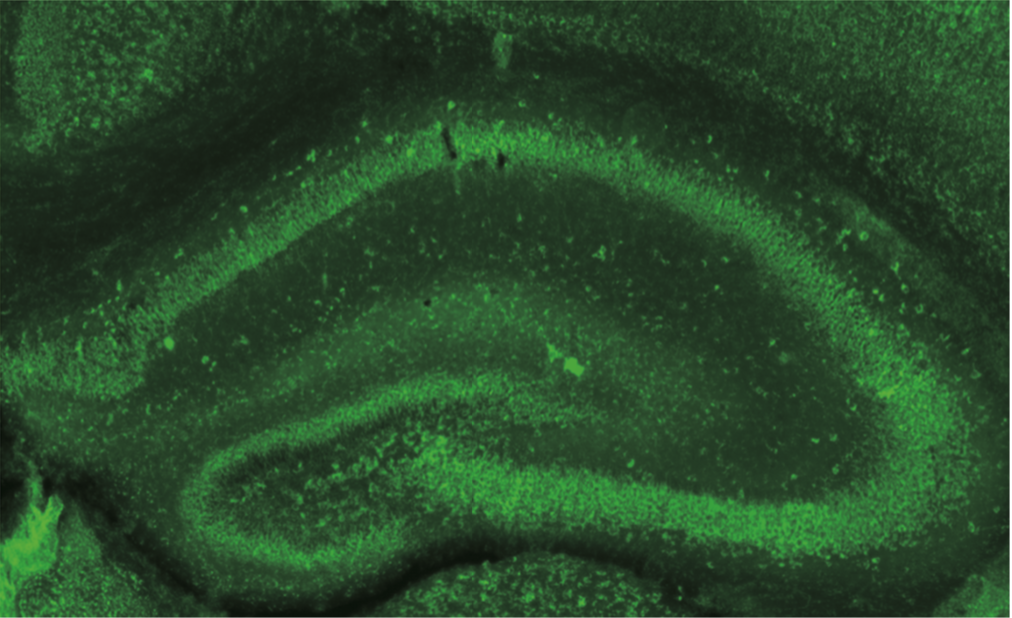
Anti Dysbindin (Dystrobrevin-Binding Protein 1) pAb (Rabbit, Affinity Purified)
CAC-ACC-PA007
Product group Antibodies
Overview
- SupplierCosmo Bio USA
- Product NameAnti Dysbindin (Dystrobrevin-Binding Protein 1) pAb (Rabbit, Affinity Purified)
- Delivery Days Customer16
- CertificationResearch Use Only
- Scientific DescriptionBackground Neurodegenerative diseases such as Alzheimers disease and Parkinsons disease have been increasing rapidly and have become a serious social problem. In recent years, new causative genes have been discovered for amyotrophic lateral sclerosis (ALS) and other intractable neurological diseases opening new avenues for research on pathogenesis. It has been suggested that aggregation and accumulation of specific proteins cause neurotoxicity and the formation of lesions, but the onset and progression mechanisms are still unclear. Neuropathological diagnostic and experimental model biomarkers are needed for drug construction, drug discovery, and therapeutic development. Dysbindin is a component of the BLOC-1 complex, a complex that is required for normal biogenesis of lysosome-related organelles (LRO), such as platelet dense granules and melanosomes. In concert with the AP-3 complex, the BLOC-1 complex is required to target membrane protein cargos into vesicles assembled at cell bodies for delivery into neurites and nerve terminals. The BLOC-1 complex, in association with SNARE proteins, is also proposed to be involved in neurite extension. It plays a role in synaptic vesicle trafficking and in neurotransmitter release. 3 isoforms produced by alternative splicing and alternative initiation have been described. Isoform 1 is mainly cytoplasmic, but shuttles between the cytoplasm and nucleus. It is exported out of the nucleus via its nuclear export sequence (NES). Its nuclear localization is required for regulation of the expression of genes, such as SYN1. It is detected in neuron cell bodies, axons and dendrites and is mainly located to the postsynaptic density. Isoform 2 also shuttles between the cytoplasm and nucleus and is mainly expressed in the dendritic spine. It is predominantly a synaptic vesicle isoform but also highly expressed in the nucleus. Isoform 3 is exclusively cytoplasmic and is predominantly found in the postsynaptic density (PSD) with little association with synaptic vesicles. Mutations in DTNBP1 gene have been linked to Hermansky-Pudlak syndrome 7 (HPS7) that is characterized by oculocutaneous albinism, bleeding due to platelet storage pool deficiency, and lysosomal storage defects. Defects in DTNBP1 are associated with susceptibility to schizophrenia. Applications Western Blotting (WB): 0.3 ug/ml Immunofluorescence (IF): 1 ug/ml Immunohistochemistry (Paraffin) (IHC (P)): 1 ug/ml Product description Dysbindin-1 References 1) Ito H, Morishita R, Shinoda T, Iwamoto I, Sudo K, Okamoto K, Nagata KI. (2010) Dysbindin-1, WAVE2 and Abi-1 form a complex that regulates dendritic spine formation. Mol Psychiatry 15:976-986. 2) Ito H, Morishita R, Nagata K. (2016) Schizophrenia susceptibility gene product dysbindin-1 regulates the homeostasis of cyclin D1. Biochim Biophys Acta. 1862: 1383-1391.
- UNSPSC12352203

